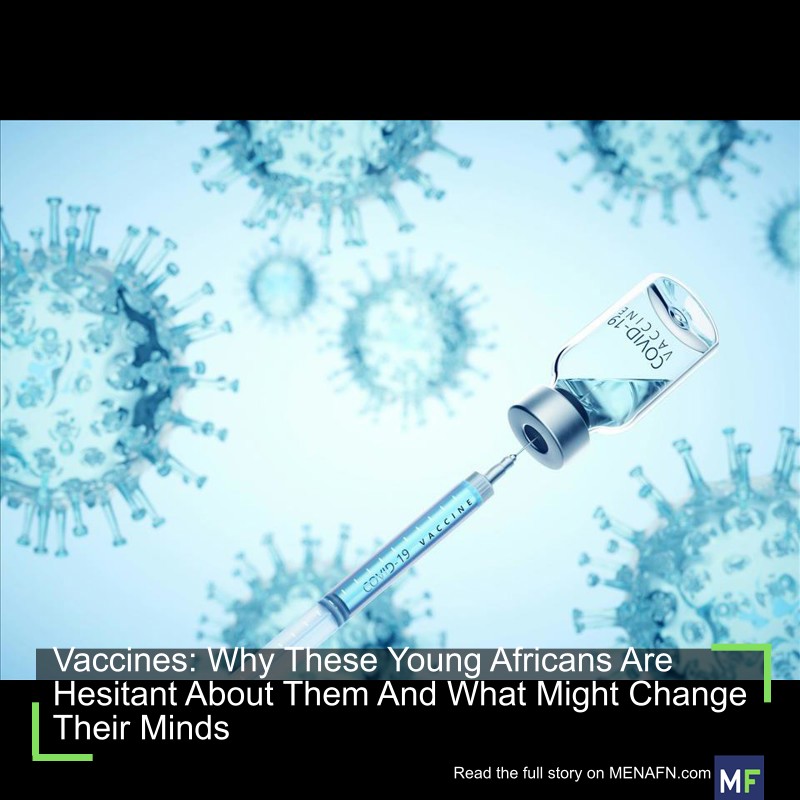
Vaccines: Why These Young Africans Are Hesitant About Them And What Might Change Their Minds
During the global COVID-19 pandemic, declared by the World Health Organization on 11 March 2020, many countries reported high levels of vaccine hesitancy among younger population groups. Negative healthcare experiences and general distrust of government have cultivated vaccine hesitancy across Africa. Misleading information about vaccine side-effects on social media adds to this challenge.
This hesitancy continues today. A 2024 study on adolescents and young adults (aged 10 to 35) in sub-Saharan Africa found a vaccine acceptance rate of just 38.7%.
These concerns were echoed in a recent study we carried out among 165 young adults in Nigeria, South Africa and Zambia, looking at attitudes towards the COVID-19 vaccine. We wanted to know what could be done to help improve future vaccine acceptance, inform campaigns and prepare for future public health responses.
Participants were hesitant to be vaccinated, for various reasons, and suggested what policymakers could do to improve vaccine uptake.
Understanding young people's perspectives on vaccine hesitancy and what can be done to address this is crucial for improving vaccine acceptance in the future.
What young adults told usOur research gathered data through focus groups and interviews.
The participants described a fear of injections, uncertainty about side effects, distrust in healthcare systems and rude healthcare workers.
Some participants were worried about the safety of the COVID-19 vaccine, particularly how it might affect those with pre-existing health conditions.
Many believed that the vaccine was developed too quickly without sufficient testing and a lack of accessible information.
Many expressed a strong fear of needles. A young South African woman aged 19 commented:
Getting over the hurdleWe found young people often felt left out of vaccine conversations. They wanted to be part of the solution and make informed choices but needed the right tools and support to do so.
Participants suggested practical ideas to help boost vaccine acceptance among their peers.
Several highlighted the importance of assessing individual health status before administering vaccines, to avoid adverse interactions with existing medical conditions and treatments. They believed that situations where vaccines were mistakenly blamed for pre-existing illnesses or ongoing treatments could be avoided.
Participants suggested innovative strategies to make vaccines more accessibile. Mobile vaccination sites and community-based outreach programmes were some of the suggestions.
Young people also suggested household visits to people who were immobile because of age, illness or disability.
Many advocated for non-injectable vaccine options, such as oral medications or microneedle patches, which could improve accessibility and reduce anxiety.
The oral polio vaccine, which has been widely used in global polio eradication efforts, is an example of a non-injectable vaccine.
COVID-19 microneedle patch prototypes are being explored for clinical testing.
The youth urged public figures, including politicians, celebrities and influencers, to publicly endorse the vaccine.
More engaging videos, interactive interviews and testimonials from vaccinated individuals could be shared across social media platforms.
The young people also emphasised the importance of comprehensive training for healthcare providers. They highlighted the need for healthcare professionals to provide respectful and empathetic care. They suggested that, by fostering respectful communication, healthcare providers could create a more welcoming and comfortable environment for their clients.
In addition, providing vaccine education in schools could educate pupils so that they could make decisions on their own.
Way forwardEngaging young people as active participants in shaping public health strategies can help increase vaccine acceptance and ensure a healthier future for all.
We believe that our findings can be applied in two ways.
First, to inform the design of tailored interventions that better resonate with young people's desires and needs, paving the way for increased vaccine uptake and acceptability.
Second, to highlight areas where young people may need further information and engagement, to better understand some of the broader issues and why some of their recommendations might not be feasible in the short or longer term.

Legal Disclaimer:
MENAFN provides the
information “as is” without warranty of any kind. We do not accept
any responsibility or liability for the accuracy, content, images,
videos, licenses, completeness, legality, or reliability of the information
contained in this article. If you have any complaints or copyright
issues related to this article, kindly contact the provider above.
















Comments
No comment